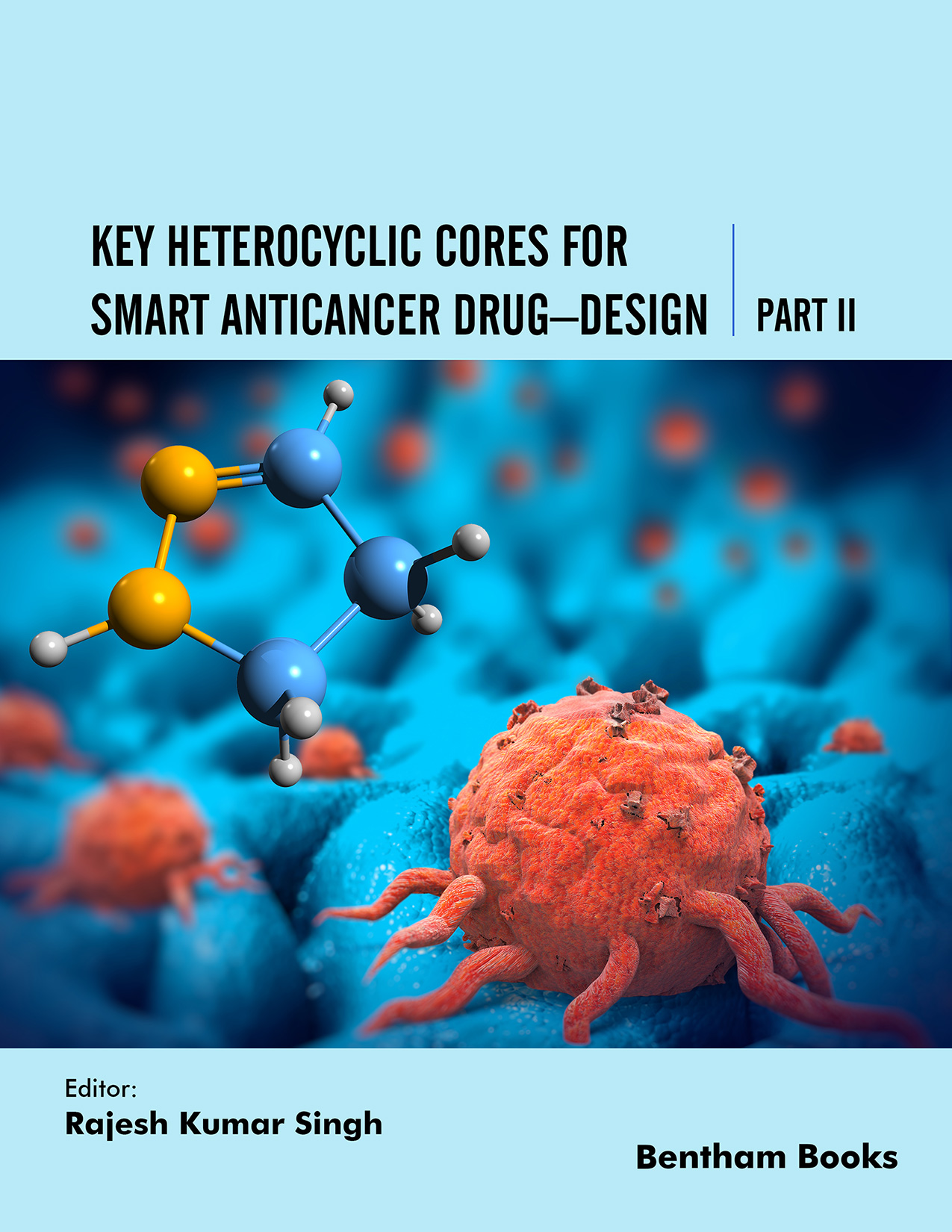Cancer which takes millions of lives every year, has been a curse on humans for a long time. New cancer targets are the prime need for researchers worldwide to develop effective anticancer drugs. The heterocyclic compounds and typically prevalent heterocyclic fragments present in most clinical drugs are the foundation of anticancer drug discovery.
This second volume of the book series “Key Heterocyclic cores for Smart Anticancer Drug-Design-Part II” focuses on various green methodologies for the synthesis of these heterocyclic cores. Furthermore, different chapters provide insight into the structure-activity relationship (SAR) of heterocyclic cores to reveal different pharmacophores accountable for anticancer activity. The volume comprises 6 scholarly written review chapters by leading researchers in the field, covering a broad range of topics.
The basic metabolism and biochemical process in the human body leading to cancer can play a decisive role in identifying and revealing new anticancer drug targets. In the first chapter of this book, Shweta et al. reviewed the various biochemical modes of action, biological targets and futuristic development for these heterocyclic cores for treating various types of cancer. The novel targets are also illustrated with a pictorial presentation to understand heterocyclic drug action on various cancer targets.
The concept of molecular hybridization has opened new doors towards designing and developing therapeutic candidates capable of binding to multiple targets. In this direction, several research groups have explored the therapeutic potentials of coumarin and its derivatives against cancer. In chapter two, Rohit et al. contributed a comprehensive review on important targets and their significance in the development of cancer. A description of reported potent anticancer coumarin hybrids inhibiting/interacting with particular targets investigated in the last five years has been provided, along with their structure-activity relationship (SAR).
Researchers and scientists have paid much attention to the drug design, and drug discovery of nitrogen (N) and sulphur (S) based heterocyclic compounds in the last decade. These N and S-based heterocyclic compounds such as pyrrole, quinazoline, thiadiazole and quinoline are widely used in the rational drug design for anticancer drugs with a favourable therapeutic index. In Chapter 3, Koli and Singh have reviewed the SAR study of recent literatures (2016-2020) in which N and S heterocyclic compounds are present as the core structure in the molecule. This chapter also emphasized the benefits of hybrid heterocyclic molecules acting via multiple target mechanisms.
The search for new anticancer agents to fight against cancer is not an ending process. Keeping in view, the aromatic diazole heterocyclic nucleus named imidazole proved promising health benefits. The significant therapeutic potential of the imidazole derivatives has triggered the medicinal chemist to develop a large number of novel anticancer compounds with a low toxicity profile. Chapter 4 by Dhingra et al. critically assessed the imidazole, demonstrating its number of anticancer analogues synthesized by various synthetic procedures. In addition, the chapter also describes the available marketed drugs having an imidazole nucleus bearing distinct substituents.
Morpholine is a highly privileged and versatile heterocyclic ring in medicinal chemistry with various biological activities due to its distinct mechanistic pathways. The talent of the morpholine ring to modulate the pharmacokinetic properties of the compounds further motivated the researchers to exploit the morpholine ring as a vital pharmacophore in developing lead compounds. Chapter 5 by Kumari and Singh outlined various synthetic strategies of morpholine ring and morpholine derivatives as potent anticancer agents. The latest data on novel anticancer morpholine derivatives with structural-activity relationship (SAR) is elaborated. The chapter also highlighted the clinical data of morpholine derivatives with anticancer activity and mechanism of action.
Natural products have played a significant role in providing novel and effective treatment inputs in anticancer research. Natural products have been a source of many anticancer agents that are being used in clinical or pre-clinical trials. Further, many compounds derived from natural products have shown the potential to be future anticancer agents. Due to their actions on numerous targets, natural products are considered ideal for anticancer drug development. In Chapter 7, Chaudhary et al. discuss the progress and ongoing developments in natural products and their analogues as anticancer agents. The challenges and future prospects of natural-based anticancer agents are also discussed.
The editor wishes to express their considerable appreciation to all the contributors of the chapters for their hard and scholarly work. We are also grateful to Mr. Mahmood Alam (Director Publication) and Ms. Humaira Hashmi (Manager Publication) of Bentham Science Publisher, who took over the management of the production of this book during the difficult circumstances of the COVID pandemic; their contribution is much appreciated. We are confident that this book will be a compelling guide to facilitate researchers, pharmacologists, and medicinal chemists in understanding the mechanism of heterocyclic drugs, which can help develop new anticancer agents.
Rajesh Kumar Singh
Department of Pharmaceutical Chemistry,
Shivalik College of Pharmacy, Nangal,
IKG, Punjab Technical University,
Jalandhar, Punjab, 140126,
India

